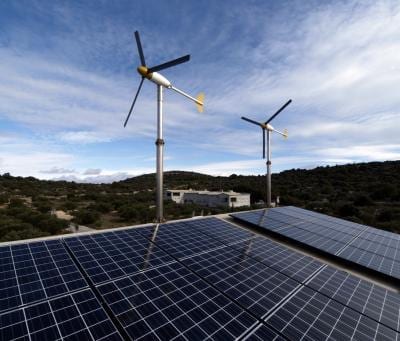
The global spread of green technologies must quicken significantly to avoid future rebounds in greenhouse gas emissions, a new Duke University study shows.
“Based on our calculations, we won’t meet the climate warming goals set by the Paris Agreement unless we speed up the spread of clean technology by a full order of magnitude, or about ten times faster than in the past,” said Gabriele Manoli, a former postdoctoral associate at Duke’s Nicholas School of the Environment, who led the study.
“Radically new strategies to implement technological advances on a global scale and at unprecedented rates are needed if current emissions goals are to be achieved,” Manoli said.
The study used delayed differential equations to calculate the pace at which global per-capita emissions of carbon dioxide have increased since the Second Industrial Revolution — a period of rapid industrialization at the end of the 19th century and start of the 20th. The researchers then compared this pace to the speed of new innovations in low-carbon-emitting technologies.
Using these historical trends coupled with projections of future global population growth, Manoli and his colleagues were able to estimate the likely pace of future emissions increases and also determine the speed at which climate-friendly technological innovation and implementation must occur to hold warming below the Paris Agreement’s 2o C target.
“It’s no longer enough to have emissions-reducing technologies,” he said. “We must scale them up and spread them globally at unprecedented speeds.”
The researchers published their peer-reviewed findings December 29 in the open-access journal Earth’s Future.
The analysis shows that per-capita CO2 emissions have increased about 100 percent every 60 years — typically in big jumps — since the Second Industrial Revolution. This “punctuated growth” has occurred largely because of time lags in the spread of emission-curbing technological advances, which are compounded by the effects of rapid population growth.
“Sometimes these lags are technical in nature, but — as recent history amply demonstrates — they also can be caused by political or economic barriers,” Manoli explained. “Whatever the cause, our quantification of the delays historically associated with such challenges shows that a tenfold acceleration in the spread of green technologies is now necessary to cause some delay in the Doomsday Clock.”
Learn more: TENFOLD JUMP IN GREEN TECH NEEDED TO MEET GLOBAL EMISSIONS TARGETS
[osd_subscribe categories=’climate-change-5′ placeholder=’Email Address’ button_text=’Subscribe Now for any new posts on the topic “CLIMATE CHANGE”‘]
Receive an email update when we add a new CLIMATE CHANGE article.
The Latest on: Climate warming goals
[google_news title=”” keyword=”climate warming goals” num_posts=”10″ blurb_length=”0″ show_thumb=”left”]
via Google News
The Latest on: Climate warming goals
- Mexico is halfway to its clean energy goal. Politics could get in the wayon April 30, 2024 at 11:30 am
Mexico is committed to having 43% of its generated energy come from non-contaminating sources by 2030. It's at about 22% today, estimates IMCO.
- Global: G7’s coal power phase out must come faster to protect people on the frontline of the climate crisison April 30, 2024 at 10:59 am
Responding to an agreement reached by G7 member states today to phase out all unabated coal-fired electricity generation in the first half of the 2030s, Candy Ofime, Amnesty International’s Climate ...
- What’s causing the catastrophic rainfall in Kenya?on April 30, 2024 at 9:30 am
The torrential rains and deadly floods that have hit Kenya since March have been some of the most catastrophic in the country in recent years ...
- Mexico could find it hard to reach its climate goalson April 30, 2024 at 8:29 am
climate-related policies went backwards under López Obrador, said climate Action Tracker, which tracks countries’ pledges to limit warming. “Mexico’s greenhouse gas emissions continue to rise — ...
- What a years-long probe of Big Oil reveals about its climate strategyon April 30, 2024 at 6:00 am
Exxon downplayed Paris agreement climate targets, according to documents, while others privately were skeptical of achieve their “net zero” commitments.
- New York is limping toward its climate goals. The state budget didn’t help much.on April 29, 2024 at 3:17 am
The budget included no significant measures to address planet-warming emissions from buildings or transportation, the biggest sources of pollution in New ...
- Waste not, want not: How methane biogases can help us reach our climate goalson April 28, 2024 at 5:00 am
How can the U.S. meet its 30×30 methane goal? Tapping America’s massive organic waste streams as a renewable energy resource.
- Climate Leaders Debate Goal for Controlling Global Warmingon April 27, 2024 at 3:45 am
A new U.N. program highlights the disconnect between climate messaging and the growing possibility of overshooting a key global warming threshold ...
- Tensions rise over who will contribute to new climate finance goalon April 26, 2024 at 9:37 am
Germany wants all high-emitters to donate to the new climate finance goal, but some countries argue it should only be developed nations ...
via Bing News











